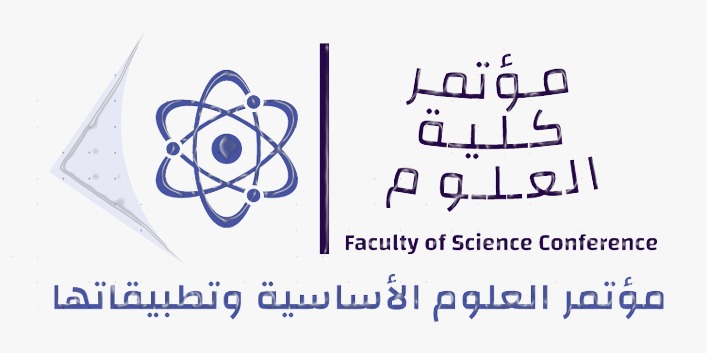Correlation Between Gender and HBA1C of Diabetic Patients with Thyroid Dysfunction
Keywords:
Diabetes, Endocrine, HbA1c, Metabolism, ThyroidAbstract
The thyroid gland secretes thyroid hormones, which are involved in controlling metabolism, growth, and development. They also affect the heart, muscles, and digestive system. Numerous health issues can result from thyroid dysfunction, including diabetes, dementia, and obesity. The data of 83 diabetic patients were obtained from the Endocrine and Diabetic Center Zliten (2023). The result showed that, the HbA1c and sex has a correlation of (0.021), the HbA1c and TSH has a correlation of (0.515), indicating that the relationship is not significant , and the HbA1c and age has a correlation of (0.439), suggesting that there is a weak relationship. The study concluded that there is no significant relationship between gender and HbA1c of diabetic patients with thyroid dysfunction.
Downloads
References
M. Babić Leko, I. Gunjača, N. Pleić, and T. Zemunik, “Environmental factors affecting thyroid-stimulating hormone and thyroid hormone levels,” Int. J. Mol. Sci., vol. 22, no. 12, p. 6521, 2021.
K. Suastika, “Clinical Use and Limitation of Hemoglobin A1c Examination,” Clin. Diabetol., vol. 10, no. 3, pp. 299–306, 2021.
et al., “Ventilator-Associated Pneumonia in a Tertiary Care Hospital,” Int. J. Curr. Res. Med. Sci., vol. 3, no. 5, pp. 29–32, 2017, doi: 10.22192/ijcrms.2017.03.05.006.
M. Domino et al., “The Effect of Rider:Horse Bodyweight Ratio on the Superficial Body Temperature of Horse’s Thoracolumbar Region Evaluated by Advanced Thermal Image Processing,” Anim. an open access J. from MDPI, vol. 12, no. 2, p. 195, Jan. 2022, doi: 10.3390/ani12020195.
A. N. Rajalakshmi and F. Begam, “Thyroid hormones in the human body: A review,” J. Drug Deliv. Ther., vol. 11, no. 5, pp. 178–182, 2021.
N. H. Ali and A. A. Majeed, “Thyroid hormone concentration and receptor,” Egypt. Acad. J. Biol. Sci. B. Zool., vol. 14, no. 1, pp. 221–230, 2022.
P. Parikh et al., “Animal source foods, rich in essential amino acids, are important for linear growth and development of young children in low‐and middle‐income countries,” Matern. Child Nutr., vol. 18, no. 1, p. e13264, 2022.
J. Köhrle, “Selenium, iodine and iron–essential trace elements for thyroid hormone synthesis and metabolism,” Int. J. Mol. Sci., vol. 24, no. 4, p. 3393, 2023.
J. Farebrother, M. B. Zimmermann, and M. Andersson, “Excess iodine intake: sources, assessment, and effects on thyroid function,” Ann. N. Y. Acad. Sci., vol. 1446, no. 1, pp. 44–65, 2019.
M. von Hafe, J. S. Neves, C. Vale, M. Borges-Canha, and A. Leite-Moreira, “The impact of thyroid hormone dysfunction on ischemic heart disease,” Endocr. Connect., vol. 8, no. 5, pp. R76–R90, 2019.
H. Ohga, K. Ohta, and M. Matsuyama, “Long-day stimulation increases thyroid-stimulating hormone expression and affects gonadal development in chub mackerel,” Comp. Biochem. Physiol. Part A Mol. Integr. Physiol., vol. 275, p. 111334, 2023.
S. H. LaFranchi, “Thyroid function in preterm/low birth weight infants: impact on diagnosis and management of thyroid dysfunction,” Front. Endocrinol. (Lausanne)., vol. 12, p. 666207, 2021.
R. Chattopadhyay, “Magnetism and Human Body,” Int. J. Sci. Res., vol. 13, no. 3, pp. 258–268, 2024, doi: 10.21275/sr24229215922.
S. Caiulo et al., “Newborn Screening for Congenital Hypothyroidism: the Benefit of Using Differential TSH Cutoffs in a 2-Screen Program,” J. Clin. Endocrinol. & Metab., vol. 106, no. 1, pp. e338–e349, 2020, doi: 10.1210/clinem/dgaa789.
J. M. Hershman and P. Beck-Peccoz, “Discoveries Around the Hypothalamic–Pituitary–Thyroid Axis,” Thyroid®, vol. 33, no. 7, pp. 785–790, 2023, doi: 10.1089/thy.2022.0258.
D. J. Bernard and E. Brûlé, “Anterior Pituitary,” Hormonal Signaling in Biology and Medicine. Elsevier, pp. 119–144, 2020, doi: 10.1016/b978-0-12-813814-4.00007-9.
J. L. Harding et al., “The Incidence of Adult-Onset Type 1 Diabetes: A Systematic Review From 32 Countries and Regions,” Diabetes Care, vol. 45, no. 4, pp. 994–1006, Apr. 2022, doi: 10.2337/dc21-1752.
E. Längst, J.-D. Tissot, and M. Prudent, “The Incidence of Adult-Onset Type 1 Diabetes: A Systematic Review From 32 Countries and Regions,” Transfus. Clin. Biol., vol. 28, no. 4, pp. 397–402, 2021, doi: 10.1016/j.tracli.2021.08.344.
M. Abu Aser, H. G. H. Al-Tourk, A. Y. A. El-Jedi, T. K. Aldirdasawi, and M. S. Esleem, “Diabetic Ketoacidosis Complications and Management in Pediatrics: A Narrative Review,” J. Med. Heal. Stud., vol. 4, no. 5, pp. 14–29, 2023, doi: 10.32996/jmhs.2023.4.5.3.
K. K., P. R., and S. P., “CORRELATION BETWEEN SERUM ZINC AND GLYCOSYLATED HEMOGLOBIN LEVELS IN TYPE II DIABETES MELLITUS.,” Int. J. Adv. Res., vol. 5, no. 1, pp. 2565–2568, 2017, doi: 10.21474/ijar01/3044.
S. M. Ferrari et al., “Thyroid autoimmune disorders and cancer,” Semin. Cancer Biol., vol. 64, pp. 135–146, 2020, doi: 10.1016/j.semcancer.2019.05.019.
P. Salazar, P. Cisternas, M. Martinez, and N. C. Inestrosa, “Hypothyroidism and Cognitive Disorders during Development and Adulthood: Implications in the Central Nervous System,” Mol. Neurobiol., vol. 56, no. 4, pp. 2952–2963, 2018, doi: 10.1007/s12035-018-1270-y.
S. Razvi, S. Bhana, and S. Mrabeti, “Challenges in interpreting thyroid stimulating hormone results in the diagnosis of thyroid dysfunction,” J. Thyroid Res., vol. 2019, no. 1, p. 4106816, 2019.
B. Biondi, G. J. Kahaly, and R. P. Robertson, “Thyroid dysfunction and diabetes mellitus: two closely associated disorders,” Endocr. Rev., vol. 40, no. 3, pp. 789–824, 2019.
V. Mehalingam, J. Sahoo, Z. Bobby, and K. V. Vinod, “Thyroid dysfunction in patients with type 2 diabetes mellitus and its association with diabetic complications,” J. Fam. Med. Prim. Care, vol. 9, no. 8, pp. 4277–4281, 2020.
Downloads
Published
Conference Proceedings Volume
Section
License
Copyright (c) 2024 فاطمة محمد جارالله، أحمد القدار

This work is licensed under a Creative Commons Attribution-NonCommercial-NoDerivatives 4.0 International License.




